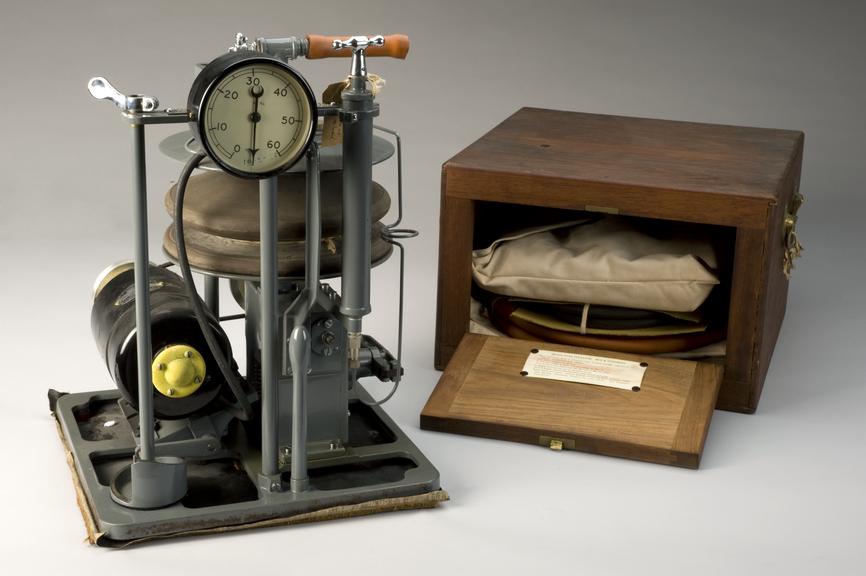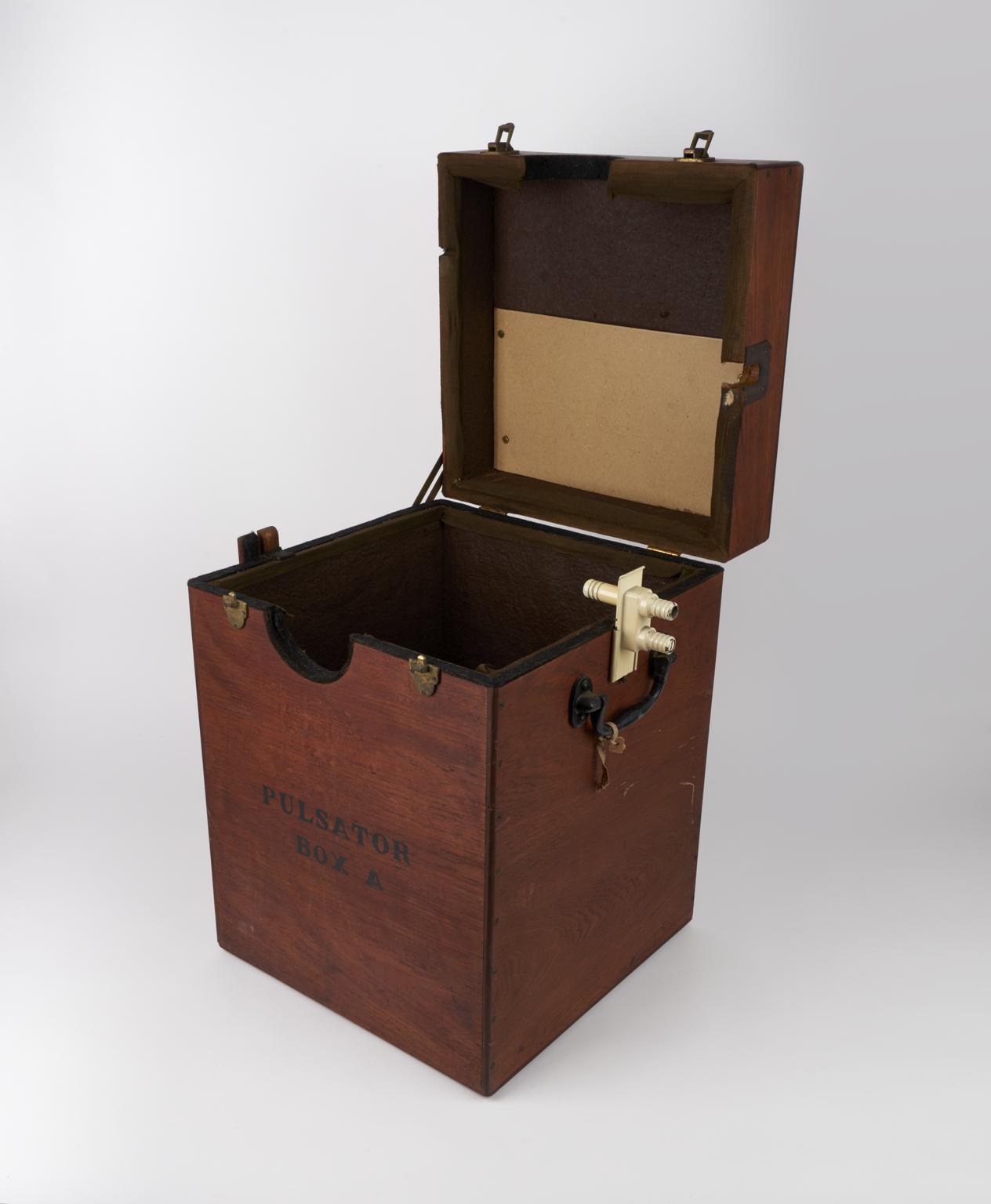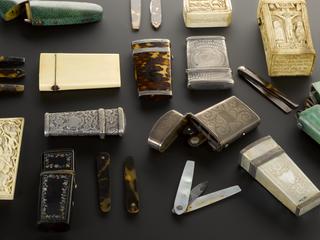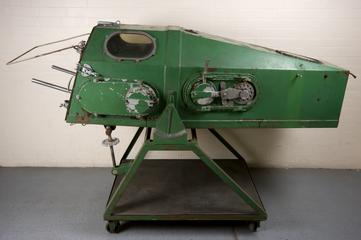
"Bragg-Paul Pulsator", model II, designed by Robert W. Paul after the invention of Sir William Bragg, parts by various makers, London 1938-'9. This example deposited at the Royal Institution in 1940 "for the guidance of future production".
The Bragg-Paul Pulsator was designed to give artificial respiration to patients who could not breathe for themselves because of illnesses such as diphtheria or during brain surgery. An air bag was placed around the patient’s chest and abdomen and rhythmically inflated and deflated by an electric pump, moving the chest muscles and allowing the patient to breathe.
The apparatus was invented in 1933 by Sir William Henry Bragg (1862-1942), an English physicist, for a friend who was experiencing muscle paralysis. Bragg’s friend used the Pulsator for three years. Robert William Paul (1869-1943), an English scientific instrument maker (who had also been a pioneer of cinema) designed the apparatus. This example was given to the Royal Institution in 1940 “for the guidance of future production”.
Details
- Category:
- Therapeutics
- Collection:
- Sir Henry Wellcome's Museum Collection
- Object Number:
- A629913
- type:
- ventilator
- credit:
- Eccles, W.H.
Parts

Box A for electric motor and pump of "Bragg-Paul Pulsator"
Box A for electric motor and pump of "Bragg-Paul Pulsator", model II.
- Materials:
- teak (wood)
- Object Number:
- A629913 Pt1/3
- type:
- cases
- Image ©
- The Board of Trustees of the Science Museum
- Part of:
- A629913 Pt1
Illustrated instruction manual
Illustrated instruction manual




